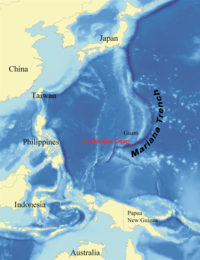
Photo from wikipedia
Marinimicrobia bacteria are widespread in subeuphotic areas of the oceans and particularly abundant in oxygen minimum zones (OMZs). Information on Marinimicrobia metabolism is sparse, making the biogeochemical influence of this… Click to show full abstract
Marinimicrobia bacteria are widespread in subeuphotic areas of the oceans and particularly abundant in oxygen minimum zones (OMZs). Information on Marinimicrobia metabolism is sparse, making the biogeochemical influence of this group challenging to predict. Here, metagenome-assembled genomes representing Marinimicrobia subgroups PN262000N21 and ARCTIC96B-7 were retrieved to near completion (97% and 94%) from OMZ metagenomes, with contamination (14.1%) observed only in ARCTIC96B-7. Genes for aerobic carbon monoxide (CO) oxidation, polysulfide metabolism and hydrogen utilization were identified only in PN262000N21, while genes for partial denitrification occurred in both genomes. Transcripts mapping to these genomes increased from <0.3% of total mRNA from the oxic zone to a max of 22% under anoxia. ARCTIC96B-7 transcript representation decreased an order of magnitude from non-sulfidic to sulfidic depths. In contrast, PN262000N21 representation was relatively constant throughout the OMZ, although transcripts encoding sulfur-utilizing proteins, including sulfur transferases, were enriched at sulfidic depths. PN262000N21 transcripts encoding a protein with fibronectin domains similar to those in cellulosome-producing bacteria were also abundant, suggesting a potential for high molecular weight carbon cycling. These data provide omic-level descriptions of metabolic potential and activity in OMZ-associated Marinimicrobia, suggesting differentiation between subgroups with roles in carbon and dissimilatory inorganic nitrogen and sulfur cycling.
Journal Title: Environmental Microbiology
Year Published: 2017
Link to full text (if available)
Share on Social Media: Sign Up to like & get
recommendations!